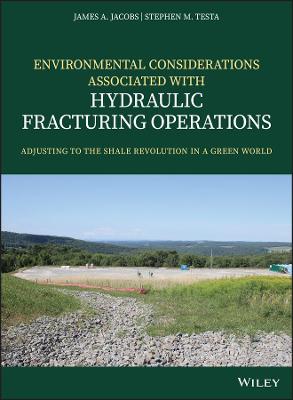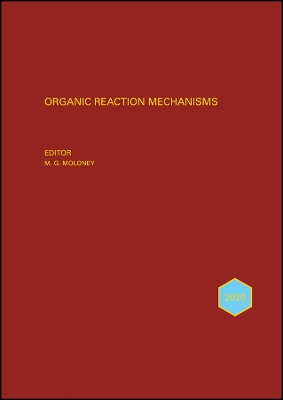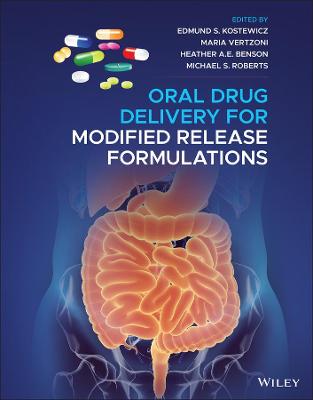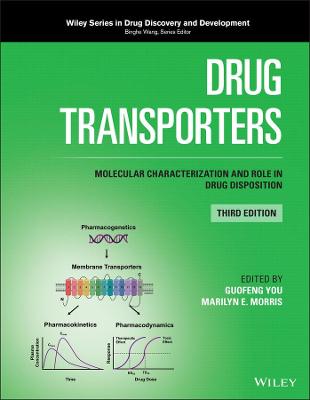Environmental Considerations Associated with Hydraulic Fracturing Operations
 -15%
portes grátis
-15%
portes grátis
Environmental Considerations Associated with Hydraulic Fracturing Operations
Adjusting to the Shale Revolution in a Green World
Jacobs, James A.; Testa, Stephen M.
John Wiley & Sons Inc
05/2019
576
Dura
Inglês
9781119336099
15 a 20 dias
1850
List of Tables xxvii
Foreword xxxi
Acknowledgments xxxiii
1 Introduction 1
1.1 Energy and the Shale Revolution 1
1.2 Cultural Influences 3
1.3 Conventional Versus Unconventional Resources 4
1.4 Well Simulation 5
1.5 Hydraulic Fracturing in the United States 16
1.6 Environmental Considerations 17
1.7 Exercises 22
References 22
Suggested Reading 23
2 Historical Development from Fracturing to Hydraulic Fracturing 25
2.1 Introduction 25
2.2 Explosives and Guns (1820s-1930s) 26
2.3 The Birth of the Petroleum Engineer (1940s-1950s) 38
2.4 Going Nuclear During Peak Oil (1960s to Mid-1970s) 39
2.5 The Rise of the Unconventionals (Mid-1970s to Present) 45
2.6 Exercises 49
References 50
Suggested Reading 51
3 Geology of Unconventional Resources 53
3.1 Introduction 53
3.2 Oil Shale Nomenclature 54
3.3 Oil Shale Classification 54
3.4 Types of Shale Formations Based on Production 56
3.5 Geology of United States Shale Deposits 60
3.6 The Role of Natural Fractures 75
3.7 Exercises 76
References 77
Suggested Reading 79
4 Overview of Drilling and Hydraulic Fracture Stimulation Techniques for Tight Oil and Gas Shale Formations 81
4.1 Introduction 81
4.2 Phase 1: Prospect Generation for Unconventional Oil and Gas Targets 85
4.3 Phase 2: Planning Phase 92
4.4 Phase 3: Drilling 94
4.5 Brief Overview of Hydraulic Fracturing 109
4.6 Operators and Contractors 111
4.7 Phase 4: Completion 111
4.8 Overview of Hydraulic Fracturing Process 115
4.9 Single-Stage Treatment 119
4.10 Fluid Recovery and Waste Management 123
4.11 Oil and Gas Production 123
4.12 Naturally Occurring Radioactive Material (NORM) 126
4.13 Workshop #1: Gas Well Economic Limit 128
4.14 Workshop #2: Oil Well Economics 129
4.15 Well Destruction 129
4.16 Summary 131
4.17 Exercises 131
References 132
Suggested Reading 134
5 Overview of Impacts from Tight Oil and Shale Gas Resource Development 137
5.1 Introduction 137
5.2 Potential Impacts and Risks of Spills 137
5.3 Significance of Impacts 137
5.4 Overview of the Five Main Resource Categories 138
5.5 Primary Wastes Generated 146
5.6 Site-specific Impact Analysis 146
5.7 Summary of Resources and Issues 163
5.8 Summary 174
5.9 Exercises 176
References 177
Suggested Reading 179
6 Surface and Groundwater Risks, Resource Quality Management, and Impacts 183
6.1 Introduction 183
6.2 The Hydraulic Fracturing Water Cycle 183
6.3 Potential Impacts on Drinking Water Resources 188
6.4 Public Water System (PWS) Sources 189
6.5 Underground Injection Control 190
6.6 Case Histories 196
6.7 Exercises 198
References 198
Suggested Reading 199
7 Induced Seismicity 203
7.1 Introduction 203
7.2 Measuring Earthquake Severity 204
7.3 Anthropogenic-Induced Earthquakes 208
7.4 Mechanics of Anthropogenic-Induced Earthquakes 210
7.5 Induced Microseismicity and Microseismic Monitoring 212
7.6 Exercises 212
References 213
Suggested Reading 213
8 Air Quality Resources and Mitigation Measures 215
8.1 Introduction 215
8.2 Unconventional Resource Extraction and Air Quality 215
8.3 Sources of Air Emissions 215
8.4 Worker Safety 220
8.5 Gas Leaks and Vapor Sampling 230
8.6 Biogenic and Thermogenic Hydrocarbon Gases 232
8.7 Gas Leaks 233
8.8 Soil Vapor Intrusion Overview 234
8.9 General Approach to Evaluating Soil Vapor Intrusion 237
8.10 Summary 248
8.11 Exercises 249
References 249
Suggested Reading 253
9 Land Use Resources and Socioeconomics 255
9.1 Introduction 255
9.2 Community Concerns and Land Use Planning 255
9.3 Environmental Justice 259
9.4 Land Disturbance 259
9.5 Light Pollution 261
9.6 Noise 263
9.7 Odor 270
9.8 Socioeconomics 271
9.9 Transportation and Traffic 272
9.10 Visual Aesthetics 277
9.11 Worker Safety 278
9.12 Cumulative Impacts 278
9.13 Exercises 279
References 279
Suggested Reading 281
10 Ecological Resources 283
10.1 Introduction 283
10.2 Ecosystem Resources 283
10.3 Ecosystem Resources 283
10.4 Interim Reclamation 286
10.5 Summary 295
10.6 Exercises 295
References 296
Suggested Reading 297
11 Legislative Trends Associated with Well Stimulation and Hydraulic Fracturing 299
11.1 Introduction 299
11.2 Federal Laws and Regulations 300
11.3 State Legislation and Regulations 304
11.4 Bans and Moratoriums 311
11.5 Exercises 313
References 313
Suggested Reading 314
12 Sampling, Exposure Pathways, and Site Conceptual Models 315
12.1 Introduction 315
12.2 Hypothetical Scenario 317
12.3 Overview of Sampling Procedures 322
12.4 Soil and Water Sampling 327
12.5 Field Screening and Analysis 329
12.6 Other Considerations 332
12.7 Fate and Transport 339
12.8 Summary 342
12.9 Exercises 342
References 345
Suggested Reading 347
13 Financial Issues: Real Estate Values and Selected Contracting Costs of Repairs, Assessment, or Mitigation Activities for Unconventional Oil and Gas Production Areas 351
13.1 Introduction 351
13.2 Valuation of Real Estate 351
13.3 Water Supplies 357
13.4 Other Mitigating Costs 358
13.5 Mitigation of Subsurface Impacts 362
13.6 Remediation Strategies 365
13.7 Budgeting for Costs 369
13.8 Summary 372
13.9 Exercises 373
References 374
Suggested Reading 375
14 Legal Considerations and Case Law 377
14.1 Introduction 377
14.2 Environmental Tort Litigation 382
14.3 Environmental/Citizen Action and Industry Challenges Litigation 383
14.4 Infrastructure-Related Litigation 384
14.5 Traditional Oil and Gas Issues in Nontraditional Forums 384
14.6 Fracking Bans and Moratoriums 384
14.7 Summary 386
14.8 Exercises 387
Reference 387
Suggested Reading 387
15 Spills, Forensic Evaluation, and Case Studies 389
15.1 Introduction 389
15.2 Spill Studies 389
15.3 Spill Settlement Case Study 392
15.3.1 Rail Case Studies 393
15.3.2 Bakken Crude Oil Characteristics: Two Studies 394
15.3.3 Summary of Bakken Crude Oil Spill Incidents 394
15.3.4 Fate and Transport of Spilled Crude 394
15.3.5 Combustion 398
15.3.6 DOT-117 Tank Car Design 398
15.4 Violations 399
15.5 Forensic Analysis 399
15.5.1 Gas Chromatograms 400
15.5.2 Tentatively Identified Compounds (TICs) 401
15.5.3 Piper Diagrams 401
15.5.4 Biomarkers 403
15.5.5 Chemical and Biological Transformations 404
15.5.6 Chemical Ratios 406
15.5.7 Geochemical Tracers 406
15.5.8 Isotopes 407
15.5.9 Forensic Isotope Analysis 408
15.5.10 Boron and Strontium Isotope Ratios 409
15.5.11 Radioactive Isotopes 410
15.5.12 Case Studies 411
15.6 Prospective and Retrospective Case Studies 413
15.6.1 US EPA Retrospective Case Study 414
15.6.2 US EPA Retrospective Study Approach and Sampling Activities 415
15.6.3 Main Findings 420
15.6.4 Summary of US EPA Retrospective Studies 438
15.7 Exercises 439
References 440
Suggested Reading 446
16 Conclusions 453
Appendix A Selected University Studies, State, and Federal Reports 455
Appendix B Glossary 461
Appendix C List of Acronyms and Abbreviations 467
Appendix D Conversions 473
Appendix E Summary of Potential Job Hazards During Hydraulic Fracture Stimulation Process 477
Appendix F Chemical Additives Used in the High-Volume Hydraulic Fracturing Operations 481
Appendix G Exposure Planning, Emergency Response, and Toxicity Tables 485
Appendix H Selected Sampling Methods and Documentation 493
Appendix I Environmental Checklists 503
Appendix J Metric Conversion of Table 3.4 (Metric Units in Bold italics) 523
Appendix K US Crude Oil Prices 1859-2016 525
Index 527
List of Tables xxvii
Foreword xxxi
Acknowledgments xxxiii
1 Introduction 1
1.1 Energy and the Shale Revolution 1
1.2 Cultural Influences 3
1.3 Conventional Versus Unconventional Resources 4
1.4 Well Simulation 5
1.5 Hydraulic Fracturing in the United States 16
1.6 Environmental Considerations 17
1.7 Exercises 22
References 22
Suggested Reading 23
2 Historical Development from Fracturing to Hydraulic Fracturing 25
2.1 Introduction 25
2.2 Explosives and Guns (1820s-1930s) 26
2.3 The Birth of the Petroleum Engineer (1940s-1950s) 38
2.4 Going Nuclear During Peak Oil (1960s to Mid-1970s) 39
2.5 The Rise of the Unconventionals (Mid-1970s to Present) 45
2.6 Exercises 49
References 50
Suggested Reading 51
3 Geology of Unconventional Resources 53
3.1 Introduction 53
3.2 Oil Shale Nomenclature 54
3.3 Oil Shale Classification 54
3.4 Types of Shale Formations Based on Production 56
3.5 Geology of United States Shale Deposits 60
3.6 The Role of Natural Fractures 75
3.7 Exercises 76
References 77
Suggested Reading 79
4 Overview of Drilling and Hydraulic Fracture Stimulation Techniques for Tight Oil and Gas Shale Formations 81
4.1 Introduction 81
4.2 Phase 1: Prospect Generation for Unconventional Oil and Gas Targets 85
4.3 Phase 2: Planning Phase 92
4.4 Phase 3: Drilling 94
4.5 Brief Overview of Hydraulic Fracturing 109
4.6 Operators and Contractors 111
4.7 Phase 4: Completion 111
4.8 Overview of Hydraulic Fracturing Process 115
4.9 Single-Stage Treatment 119
4.10 Fluid Recovery and Waste Management 123
4.11 Oil and Gas Production 123
4.12 Naturally Occurring Radioactive Material (NORM) 126
4.13 Workshop #1: Gas Well Economic Limit 128
4.14 Workshop #2: Oil Well Economics 129
4.15 Well Destruction 129
4.16 Summary 131
4.17 Exercises 131
References 132
Suggested Reading 134
5 Overview of Impacts from Tight Oil and Shale Gas Resource Development 137
5.1 Introduction 137
5.2 Potential Impacts and Risks of Spills 137
5.3 Significance of Impacts 137
5.4 Overview of the Five Main Resource Categories 138
5.5 Primary Wastes Generated 146
5.6 Site-specific Impact Analysis 146
5.7 Summary of Resources and Issues 163
5.8 Summary 174
5.9 Exercises 176
References 177
Suggested Reading 179
6 Surface and Groundwater Risks, Resource Quality Management, and Impacts 183
6.1 Introduction 183
6.2 The Hydraulic Fracturing Water Cycle 183
6.3 Potential Impacts on Drinking Water Resources 188
6.4 Public Water System (PWS) Sources 189
6.5 Underground Injection Control 190
6.6 Case Histories 196
6.7 Exercises 198
References 198
Suggested Reading 199
7 Induced Seismicity 203
7.1 Introduction 203
7.2 Measuring Earthquake Severity 204
7.3 Anthropogenic-Induced Earthquakes 208
7.4 Mechanics of Anthropogenic-Induced Earthquakes 210
7.5 Induced Microseismicity and Microseismic Monitoring 212
7.6 Exercises 212
References 213
Suggested Reading 213
8 Air Quality Resources and Mitigation Measures 215
8.1 Introduction 215
8.2 Unconventional Resource Extraction and Air Quality 215
8.3 Sources of Air Emissions 215
8.4 Worker Safety 220
8.5 Gas Leaks and Vapor Sampling 230
8.6 Biogenic and Thermogenic Hydrocarbon Gases 232
8.7 Gas Leaks 233
8.8 Soil Vapor Intrusion Overview 234
8.9 General Approach to Evaluating Soil Vapor Intrusion 237
8.10 Summary 248
8.11 Exercises 249
References 249
Suggested Reading 253
9 Land Use Resources and Socioeconomics 255
9.1 Introduction 255
9.2 Community Concerns and Land Use Planning 255
9.3 Environmental Justice 259
9.4 Land Disturbance 259
9.5 Light Pollution 261
9.6 Noise 263
9.7 Odor 270
9.8 Socioeconomics 271
9.9 Transportation and Traffic 272
9.10 Visual Aesthetics 277
9.11 Worker Safety 278
9.12 Cumulative Impacts 278
9.13 Exercises 279
References 279
Suggested Reading 281
10 Ecological Resources 283
10.1 Introduction 283
10.2 Ecosystem Resources 283
10.3 Ecosystem Resources 283
10.4 Interim Reclamation 286
10.5 Summary 295
10.6 Exercises 295
References 296
Suggested Reading 297
11 Legislative Trends Associated with Well Stimulation and Hydraulic Fracturing 299
11.1 Introduction 299
11.2 Federal Laws and Regulations 300
11.3 State Legislation and Regulations 304
11.4 Bans and Moratoriums 311
11.5 Exercises 313
References 313
Suggested Reading 314
12 Sampling, Exposure Pathways, and Site Conceptual Models 315
12.1 Introduction 315
12.2 Hypothetical Scenario 317
12.3 Overview of Sampling Procedures 322
12.4 Soil and Water Sampling 327
12.5 Field Screening and Analysis 329
12.6 Other Considerations 332
12.7 Fate and Transport 339
12.8 Summary 342
12.9 Exercises 342
References 345
Suggested Reading 347
13 Financial Issues: Real Estate Values and Selected Contracting Costs of Repairs, Assessment, or Mitigation Activities for Unconventional Oil and Gas Production Areas 351
13.1 Introduction 351
13.2 Valuation of Real Estate 351
13.3 Water Supplies 357
13.4 Other Mitigating Costs 358
13.5 Mitigation of Subsurface Impacts 362
13.6 Remediation Strategies 365
13.7 Budgeting for Costs 369
13.8 Summary 372
13.9 Exercises 373
References 374
Suggested Reading 375
14 Legal Considerations and Case Law 377
14.1 Introduction 377
14.2 Environmental Tort Litigation 382
14.3 Environmental/Citizen Action and Industry Challenges Litigation 383
14.4 Infrastructure-Related Litigation 384
14.5 Traditional Oil and Gas Issues in Nontraditional Forums 384
14.6 Fracking Bans and Moratoriums 384
14.7 Summary 386
14.8 Exercises 387
Reference 387
Suggested Reading 387
15 Spills, Forensic Evaluation, and Case Studies 389
15.1 Introduction 389
15.2 Spill Studies 389
15.3 Spill Settlement Case Study 392
15.3.1 Rail Case Studies 393
15.3.2 Bakken Crude Oil Characteristics: Two Studies 394
15.3.3 Summary of Bakken Crude Oil Spill Incidents 394
15.3.4 Fate and Transport of Spilled Crude 394
15.3.5 Combustion 398
15.3.6 DOT-117 Tank Car Design 398
15.4 Violations 399
15.5 Forensic Analysis 399
15.5.1 Gas Chromatograms 400
15.5.2 Tentatively Identified Compounds (TICs) 401
15.5.3 Piper Diagrams 401
15.5.4 Biomarkers 403
15.5.5 Chemical and Biological Transformations 404
15.5.6 Chemical Ratios 406
15.5.7 Geochemical Tracers 406
15.5.8 Isotopes 407
15.5.9 Forensic Isotope Analysis 408
15.5.10 Boron and Strontium Isotope Ratios 409
15.5.11 Radioactive Isotopes 410
15.5.12 Case Studies 411
15.6 Prospective and Retrospective Case Studies 413
15.6.1 US EPA Retrospective Case Study 414
15.6.2 US EPA Retrospective Study Approach and Sampling Activities 415
15.6.3 Main Findings 420
15.6.4 Summary of US EPA Retrospective Studies 438
15.7 Exercises 439
References 440
Suggested Reading 446
16 Conclusions 453
Appendix A Selected University Studies, State, and Federal Reports 455
Appendix B Glossary 461
Appendix C List of Acronyms and Abbreviations 467
Appendix D Conversions 473
Appendix E Summary of Potential Job Hazards During Hydraulic Fracture Stimulation Process 477
Appendix F Chemical Additives Used in the High-Volume Hydraulic Fracturing Operations 481
Appendix G Exposure Planning, Emergency Response, and Toxicity Tables 485
Appendix H Selected Sampling Methods and Documentation 493
Appendix I Environmental Checklists 503
Appendix J Metric Conversion of Table 3.4 (Metric Units in Bold italics) 523
Appendix K US Crude Oil Prices 1859-2016 525
Index 527
















